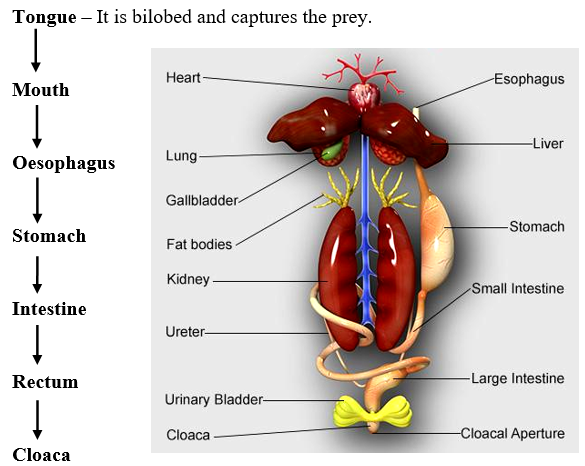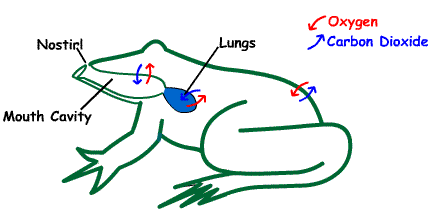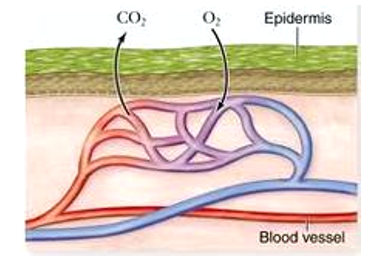Digestive System
- The digestive system in frogs is complete, with a mouth and an anus.
- It consists of an alimentary canal and associated digestive glands.
- Salivary glands are absent in frogs.
- Adult frogs are carnivorous, while the tadpoles are herbivorous.
- Since frogs are carnivores, the length of intestine is reduced and therefore the alimentary canal is short.
- The structure of the alimentary canal is as follows:

- Stomach
-
- Walls of the stomach secrete HCl and gastricjuices.
- Digestion of food takes place by the action of these secretions.
-
- Intestine
- Chyme (artially digested food) is passed from stomach to the first part of the small intestine called the duodenum.
- The bile produced by liver is stored in gall bladder. Duodenum receives this bile from gall bladder and pancreatic juices(containing digestive enzymes) from the pancreas through a common bile duct.
- Bile – Emulsifies fat.
- Pancreatic juices – Digest carbohydrates and proteins.
- Final digestion takes place in the intestine.
- There are numerous finger-like folds in the inner wall of intestine called villi and microvilli. They increase the surface area for the absorption of digested food.
- Cloaca
- It is the common external opening of both digestive and reproductive system.
- The undigested solid waste from intestines moves into the rectum and finally passes out through cloaca.
Respiratory system
- Adult frogs respire on land and in the water by two different methods.
- On land, they respire through lungs, skin and buccal cavity.
- Respiration through lungs is called pulmonary respiration.

- Lungs are sac- like and pink colored. A pair of lungs is present in the thorax region of the trunk. Air enters into the buccal cavity through nostrils, and then into the lungs.
- During aestivation and hibernation, frog shows cutaneous respiration (through skin).

- In water also, frogs respire through skin (cutaneous respiration). Dissolved oxygen in the water is exchanged through the skin by diffusion.